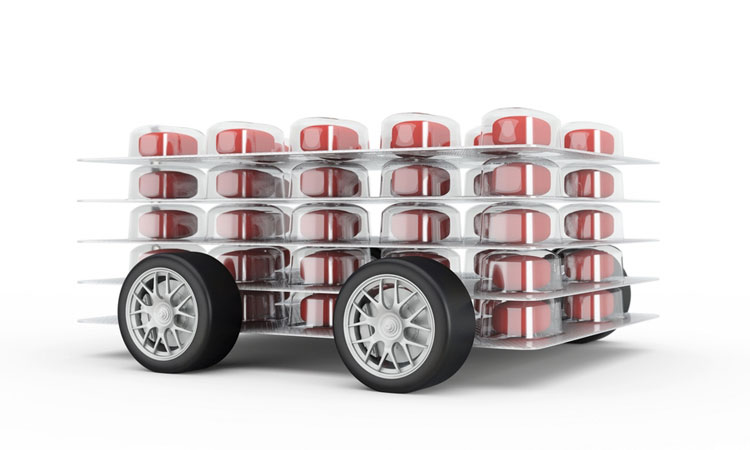Are tiny, soft robots the future of drug delivery?
Posted: 28 September 2018 | Iqra Farooq (European Pharmaceutical Review) | No comments yet
Researchers have developed a tiny, soft drug delivery robot with multiple legs, which is capable of handling and carrying heavy loads…


ARVE Error: The [[arve]] shortcode needs one of this attributes av1mp4, mp4, m4v, webm, ogv, url
A tiny, soft robot, looking a little like a caterpillar could be the future of drug delivery for humans.
Researchers at City University of Hong Kong (CityU) developed the tiny robot, which is capable of carrying heavy loads and can adapt to adverse environments.
Many researchers globally have been developing soft milli-robots. This design with multi-legs significantly reduces friction so the robot can move efficiently inside surfaces within the body, especially where the body is lined with, or fully immersed in body fluids, such as blood or mucus.
The ‘legs’ of the soft robot are less than 1 millimetre long, and were developed after the intensive study of ground animals with 2, 4,8 or more legs. The researchers investigated leg length, and the distance between the legs to guide their developments.
A novel tiny, soft robot with caterpillar-like legs capable of carrying heavy loads and adaptable to adverse environment was developed from a research led by City University of Hong Kong (CityU). Controlled by electromagnetic force, the robot can move in both a flap propulsion pattern and an inverted pendulum pattern, meaning that it can use its front feet to flap forward as well as swinging the body by standing on the left and right feet alternately to advance respectively. Credit: City University of Hong Kong.
“Most animals have a leg-length to leg-gap ratio of 2:1 to 1:1. So we decided to create our robot using 1:1 proportion,” explains Dr Shen Yajing, Assistant Professor at CityU’s Department of Biomedical Engineering (BME), who led the research.
The thickness of the body of the robot measures around 0.15 millimetres, with each leg measuring 0.6 millimetres, making the leg-length-to-gap ratio around 1:1.
The pointed legs of the robot have increasingly reduced their contact area, and thus the friction with the surface. Lab tests have indicated that multi-legged robots have 40 times less friction than a limbless robots in both wet and dry environments.
Aside form the multi-leg design, the researchers mentioned that the materials the robot is fabricated from also matters. It is made from polydimethylsiloxane (PDMS) embedded with magnetic particles which enables it to be controlled remotely by electromagnetic forces.
“Both the materials and the mutli-leg design greatly improve the robot’s hydrophobic property. Besides, the rubbery piece is soft and can be cut easily to form robots of various shapes and sizes for different applications,” said Professor Wang Zuankai at CityU’s Department of Mechanical Engineering (MNE), who conceived this research idea and initiated the collaboration among the researchers.
The robot is able to move in both a flap propulsion pattern and an inverted pendulum pattern.
“The rugged surface and changing texture of different tissues inside the human body make transportation challenging. Our multi-legged robot shows an impressive performance in various terrains and hence open wide applications for drug delivery inside the body,” said Prof Wang.
When faced with something ten times its leg length, the robot was able to lift one end of its body to form an angle of up to 90 degrees and cross the obstacle easily. The researchers mention that it can also be sped up by increasing its electromagnetic frequency.
“We are hoping to create a biodegradable robot in the next two to three years so it will decompose naturally after its meds delivery mission,” says Prof Yajing.
The findings have been published in the latest issues of Nature Communications.
ARVE Error: The [[arve]] shortcode needs one of this attributes av1mp4, mp4, m4v, webm, ogv, urlRelated topics
Clinical Development, Drug Delivery Systems, Drug Development, Research & Development (R&D)








